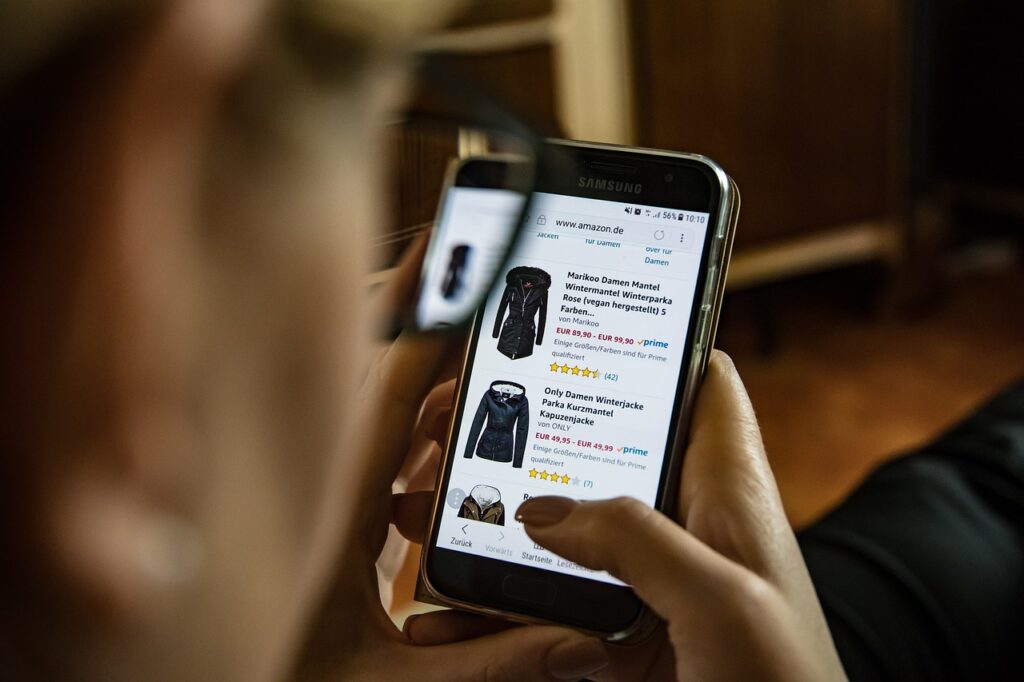Approximately 76% of shoppers state that they are more likely to buy from brands that personalize shopping. In today’s fast-paced digital world, personalization has become an indispensable aspect of online store success. If you are developing online shopping apps, creating tailored shopping experiences for customers will drastically increase customer satisfaction levels while simultaneously improving conversion rates and cultivating brand loyalty.
Companies that know how to do personalization right can generate 40% more revenue than those brands that do not.
Let’s examine ways in which personalizing shopping experiences using key strategies, cutting-edge tech solutions, and best practices could boost e-commerce revenue growth.
1. Understanding personalization in E-commerce
Personalization refers to tailoring experiences, recommendations, and marketing efforts specifically to individual users based on their preferences, behaviors, and past interactions with a product, content, or offer that they would find appealing. It not only enhances their shopping experience but also encourages them to repeat purchases and increases loyalty.

2. Why is personalization essential?
Shoppers tend to spend 40% more money than they have actually planned when they recognize that their shopping experience is highly personalized. Personalization plays a crucial role in boosting good shopping customer experience. For starters, personalized messages offer great communication benefits to their recipients. Here are some benefits customers enjoy through personalization.
Improved user experience: Make shopping more pleasurable and efficient by helping customers quickly locate what they’re searching for within the app.
Increase engagement: Keep customers exploring new products so they continue to make purchases.
Higher conversion rates: Tailored recommendations can increase sales when brands suggest items that appeal to a customer. These products need to match the taste of the shopper, thus making purchases much more likely to happen.
Customer loyalty: Offering personalized shopping experiences can create a bond between the customer and the brand, which will eventually foster loyalty.
3. Collecting customer data
To create personalized shopping experiences, you should first collect relevant user data. Here’s where you can collect it:
User profiles: Help shoppers build user-specific profiles detailing their preferences, sizes, and favorite brands.
Browsing history: Monitor products users browsed or viewed in your app before making a purchase.
Purchase history analysis: Examine past purchases to detect trends or preferences among your shoppers.
Customer feedback: Conduct surveys and feedback forms with your app users to better understand what their wants and needs are.
However, you always need to put user privacy and data protection first. Always inform users how you are going to utilize their data. Don’t forget to disclose to them how you will safeguard their data. Always give them the option to opt out if required.

4. Implementing personalization techniques
80% of companies saw an uplift when they started to implement personalization techniques. Here are some of the popular ones:
Product recommendations: Personalize the shopping experience by using algorithms to analyze user data and suggest items based on their preferences.
Collaborative filtering: Recommend products based on similar users’ tastes. For example, “Customers who bought this also purchased…”
Content-based filtering: Suggests items according to product features such as category, brand, and color that a user might prefer. Adjust the app content based on user behavior to keep the shopping experience interesting and fulfilling for every user. Customize the homepage layout, featured products, and promotions according to each customer’s interests in order to deliver a personalized shopping experience that exceeds customer expectations.
Utilize data: Use customer data for personalized marketing campaigns, sending push notifications or emails about sales, new arrivals, or promotions tailored specifically for individual preferences. Emails that have personalized subject lines tend to be opened 26% more than those that do not. This approach has proven successful in increasing open rates and conversion rates significantly.
User-generated content: Be sure to incorporate reviews, ratings, and testimonials that resonate with user interests into user-generated content displays for trust-building purposes as they influence purchasing decisions. Putting user reviews up can build loyalty among buyers as they gain more trust in you as an organization and influence purchasing decisions more directly.
Enhance search functionality within the app with custom autocomplete suggestions and filters to meet user preferences, for example, prioritizing eco-friendly products when they appear.
5. Leveraging technology for personalization
Integrate Artificial Intelligence (AI) and Machine Learning (ML):73% of customers want brands to personalize their services better using better AI and ML tools that are now available at their disposal. AI algorithms can analyze large volumes of user behavior data in minutes to detect various patterns. Machine learning models can then be used to predict customer preferences and offer improved product recommendations to them.
Make use of analytics: Utilize analytics tools to track customer interactions within an app and understand user behavior to make more informed decisions regarding personalization strategies.
Implement Customer Relationship Management (CRM) systems: Utilize CRM systems to organize customer data and interactions efficiently. Such programs allow companies to track customers across various touchpoints while offering tailored communications and providing real-time tracking of behavior across multiple touchpoints.
Conduct A/B Testing: Run A/B tests to measure the success of personalized features in an application. Compare various versions and see which personalization strategies are bringing you positive results.
6. Craft a seamless omnichannel experience
Modern consumers access brands through multiple channels, such as websites, mobile or online shopping apps, social media, and email. Therefore, this requires effective personalization across various channels like websites and social media platforms. For optimal personalization strategies to work, try developing an omnichannel experience so you can seamlessly transition customers between different channels. To optimize personalization effectively, ensure you create an unbroken omnichannel journey for each of them!
Consistent branding: Deliver an integrated look and feel across platforms to increase brand recognition.
Unified customer profiles: Integrate customer data across channels so customers have an effortless and smooth shopping experience no matter which platform they choose to shop.
Cross-channel promotions: Use insights from one channel to sync the strategies to another. For example, you might promote mobile app downloads using email marketing by luring your existing or potential customers with exclusive app discounts.

7. Social media’s role
Social media plays a vital role in customer engagement and personalization for brands of all kinds; here’s how it can be leveraged:
Social proof: Showcasing customer reviews on product pages to demonstrate social media feedback may positively influence purchases. This method is also known as social proofing. In contrast, integration via social media accounts allows customers to log in or share purchases and experiences through these networks.
Targeted ads: Using the social media interaction data, you can create targeted ad campaigns for specific demographics on social media.
Augmented Reality (AR): Using this method, you can enhance customer experiences by helping them visualize products within their own environment. For example, furniture retailers could develop online shopping apps to allow their users to see how a sofa would look in their living room. Doing this will not only personalize the shopping experience but can also significantly reduce the return rates.

9. Protecting user trust
With increasing concerns surrounding data privacy, creating an environment in which user trust can flourish is of the utmost importance. Follow these best practices:
Transparency: Inform users about data collection, usage, and benefits that come from doing it.
Opt-in features: Allow for greater user control over their own information by offering opt-in and opt-out options of personalized features.
Data security: Implement robust safeguards against any breaches of user data so data stays secure.
10. Measuring the effectiveness of personalization
To ensure that your personalization efforts are successful, measure their effectiveness through:
Key Performance Indicators (KPIs): Measure metrics such as conversion rates, average order value, and customer retention rates.
Customer feedback: Continuously solicit input in order to understand user experiences and make necessary modifications.
Iterative improvements: Employ data analytics to identify areas you need to improve.
Regularly make changes and update your app to enhance personalization and provide a better experience for end-users.
Conclusion
Personalizing shopping experiences has become an integral component of online commerce as it leads to happier customers and increased sales. Shopping app developers have an incredible opportunity to use data and technology to tailor user experiences that resonate deeply with their existing and potential customers.
By understanding the significance of personalization and employing tailored approaches for implementation, developers can create online shopping apps that are engaging. As a result, these apps not only meet but exceed customers’ expectations.
By following the above guidelines, shopping app developers can take full advantage of the power of personalization to create engaging, memorable shopping experiences that foster app growth and consumer retention in today’s competitive marketplace.
Want to take advantage of mobile OEM advertising to help your online shopping app reach the right audience? Consult us now!
Want to unlock the full blueprint of how to build and market a shopping app? Discover all the secrets in our The Ultimate Guide on How to Create the Best Online Shopping App!
About the Author






